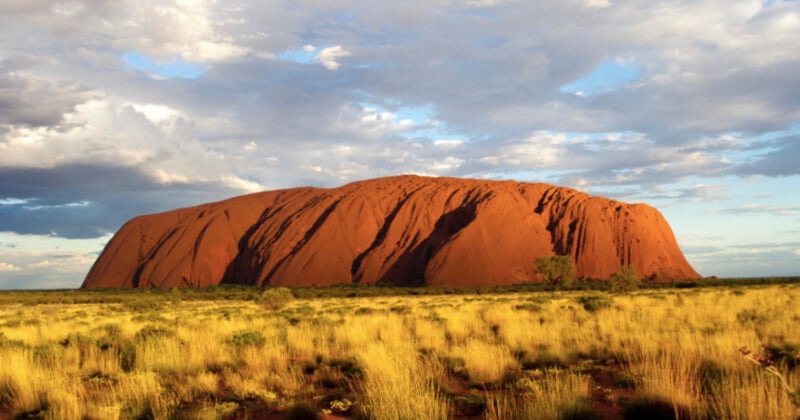Influencers Hit with Surprise List of Fines Over Travel Photos Posted Months Earlier

A pair of travel influencers have expressed their shock after they were sent a lengthy list detailing almost “20 fineable offences” over photos they had posted on Instagram months earlier.
Content-creator couple Britt and Tim Cromie issued a warning to photographers visiting Uluru, which is one of the most photographed landmarks in Australia, after they were ordered to delete their images taken there.
World Heritage-listed and one of the country’s most iconic symbols, Uluru (also known as Ayers Rock) is a huge sandstone monolith in Australia’s Northern Territory. The natural landmark is revered as a sacred Indigenous site.
Britt and Tim Cromie, known online as @lifeofthecromies, shared photos and videos from their trip to Uluru on social media earlier this year. Three months later, they received a detailed list of multiple breaches for their pictures under the Uluru-Kata Tjuta National Park media guidelines.
“There’s like 20 lines of fineable offences,” Britt says in a recent Instagram post, admitting the couple had not realised content creators needed a permit.
‘When in Doubt, Put the Camera Away.”
The Uluru website states that photographs of culturally sensitive sites are prohibited at Uluru—Kata Tjuta National Park to respect the Aboriginal Anangu people who honor the rock as sacred. While Britt and Tim followed signs banning photography in certain areas, they were unaware that wider rules applied to filming and publicly sharing content.
After discovering the rules, the couple applied for and purchased a permit, which costs $20 per day for commercial photography or $250 per day for filming, and removed all content showing sensitive sites. Despite this, three months later they received an email detailing multiple alleged offences, according to The New York Post.
“It’s not actually based complete[ly] on sensitive areas,” Britt says. “It’s things such as actions, like we picked up a broken branch we were using to swat flies, and we’ve been told that we need to remove any footage of doing that.”
She adds: “And some areas, even though they are photography zones, you need to include a wider area of the landscape.”
The guidelines advise visitors to obscure sacred sites using objects like trees, bushes, sand dunes, people, or even camels in photographs. Additionally, the couple was flagged for actions captured in photos that allegedly breached the Environment Protection and Biodiversity Conservation Act. Britt explains that, due to the number of infractions, they would have to remove their entire YouTube video and significant Instagram content featuring sensitive sites, emphasizing that they respect the culture, country, and traditional owners.
Britt stressed that the story was not a complaint but a cautionary example for other photographers and content creators visiting Uluru. In the video caption, the couple advised photographers to secure a permit in advance, follow the media guidelines closely, and “when in doubt, put the camera away.”
“Do a sh*t load of digging if you do want to film, photograph, and share any of your content from Uluru,” Britt warns. “Just so you don’t end up with a massive email like this and potentially fined.”
Image credits: Header photo licensed via Depositphotos.